Protecting habitats that can store large amounts of carbon is crucial to mitigate climate change. However, translating this idea into action poses significant hurdles, especially due to challenges in measuring and verifying carbon stock and flux.
That’s where the Earth Observatory of Singapore - Remote Sensing (EOS-RS) Lab steps in. One of their projects aims to develop innovative, scalable methods to verify carbon stock and emissions using satellite data, specifically in tropical peatlands.
To reach this goal, the EOS-RS team, in collaboration with the Centre for Geohazard Observations (CGO), braved the scorching 43°C heat (real feel) of Brunei's tropical peat swamps to install the monitoring equipment they need to gather data about how peatlands change with time.
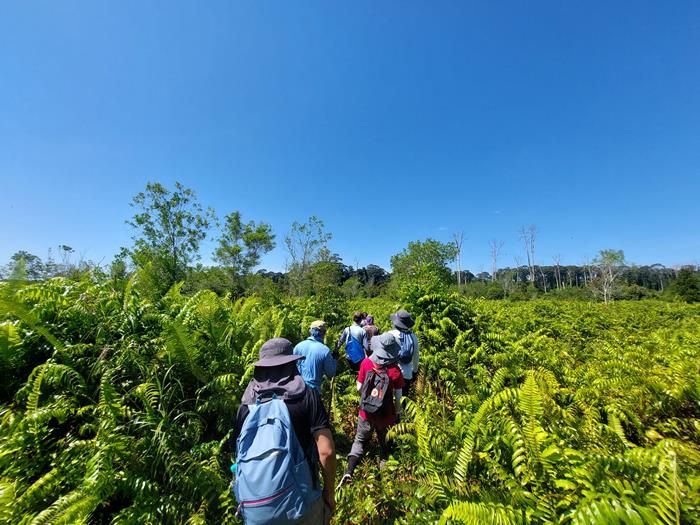
The team venturing into the pristine forests on their way to their field site (Source: Noel Ivan Ulloa/Earth Observatory of Singapore)
Monitoring carbon flux in peatlands
“I’ve never been to a forest this nice before,” remarked Ms Cheryl Tay, a PhD student at the Asian School of the Environment and EOS, referring to the field site that she’s spent two years studying remotely using satellite observations.
Peatlands are swamp-like ecosystems that act as significant carbon sinks, capturing and storing substantial amounts of carbon dioxide even more effectively than trees. This unique characteristic presents both potential and risks: the destruction of peatlands could result in the release of substantial amounts of carbon dioxide.

How peatlands store large amounts of carbon (Source: Earth Observatory of Singapore)
"Despite peatlands covering only 3% of the Earth's surface, they contain a vast amount of concentrated carbon. It is crucial to keep it stored underground,” explained Ms Tay.
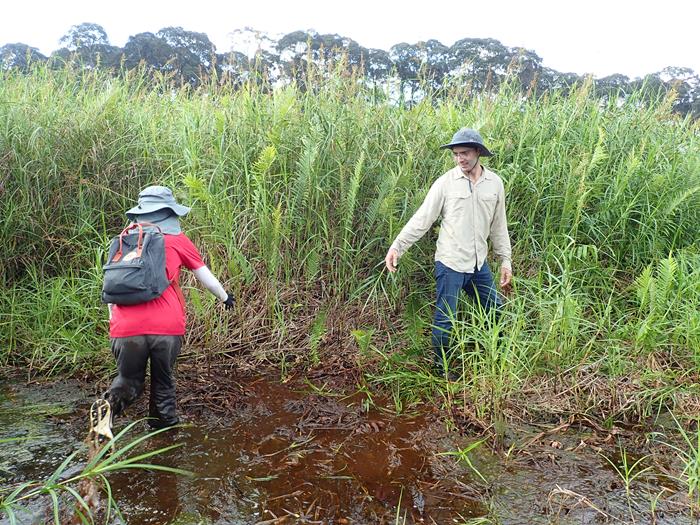
Ms Tay and Dr Ulloa trekking through a swampy route (Source: Sang-Ho Yun/Earth Observatory of Singapore)
Measuring large-scale change using satellite data
By leveraging on Interferometric Synthetic Aperture Radar (InSAR), the team is developing a precise and scalable way to monitor carbon flux in peatlands. They process large volume of satellite data to map vast areas covered by peatlands and assess changes across time. Areas that are subsiding, for example, could indicate peatland degradation and the release of carbon dioxide.
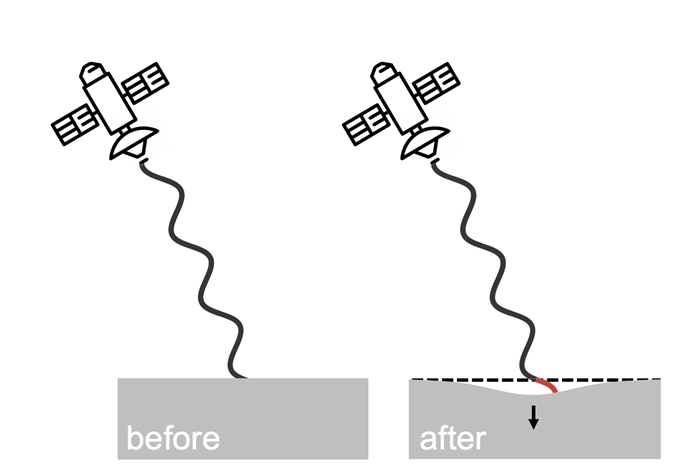 Interferometric Synthetic Aperture Radar (InSAR) is a technology that can be used to measure changes in land height by calculating the change of the distance between the satellite and the ground in terms of fraction of wavelength (Source: Cheryl Tay/Earth Observatory of Singapore)
Interferometric Synthetic Aperture Radar (InSAR) is a technology that can be used to measure changes in land height by calculating the change of the distance between the satellite and the ground in terms of fraction of wavelength (Source: Cheryl Tay/Earth Observatory of Singapore)
But InSAR data alone is not enough to monitor tropical peatlands. To estimate subsidence rates accurately, InSAR data must be complemented with ground data. “It’s essential we acquire ground truth information to prove that what you’re measuring from 800 kilometres away is accurate,” said Dr Noel Ivan Ulloa, a Research Fellow in the EOS-RS Lab.
As InSAR measures relative velocities, having independent data from other sources can help ensure that the measurements are tracked against a stable reference point. This is why the team visited the peatland in person: to install equipment for retrieving ground measurements.
Additionally, Ms Tay shared, “Knowing what the ground cover actually looks like is important when we try to interpret the InSAR data, because the InSAR signal is influenced by ground conditions such as soil moisture and vegetation characteristics.”
A new technique to monitor peatlands
Due to the limited research conducted on tropical peatlands, there is a lack of well-established techniques for gathering ground data.
Recognising this gap, Associate Professor Sang-Ho Yun, the Director of EOS-RS, and Dr Lujia Feng, Principal Research Fellow part of the CGO team, devised an innovative approach: the installation of a Global Navigation Satellite Systems (GNSS) station within a tropical peatland. The station is set to provide estimates of ground displacement that will be compared with the InSAR estimates, ensuring a high level of accuracy across the two datasets.
The establishment of the peatland GNSS station presented an exciting challenge for both the EOS-RS and CGO teams. Typically, GNSS stations are designed for solid ground, which differs significantly from the soft and waterlogged peat swamps of Brunei. These unique requirements compelled the team to work with new materials and components in addition to the standard suite of GNSS parts, all while navigating the treacherous swampy terrain. “The ground was covered in ankle-grabbing vines, and our legs sank through hidden holes between roots and branches concealed by dense ferns,” said Assoc Prof Sang-Ho Yun.
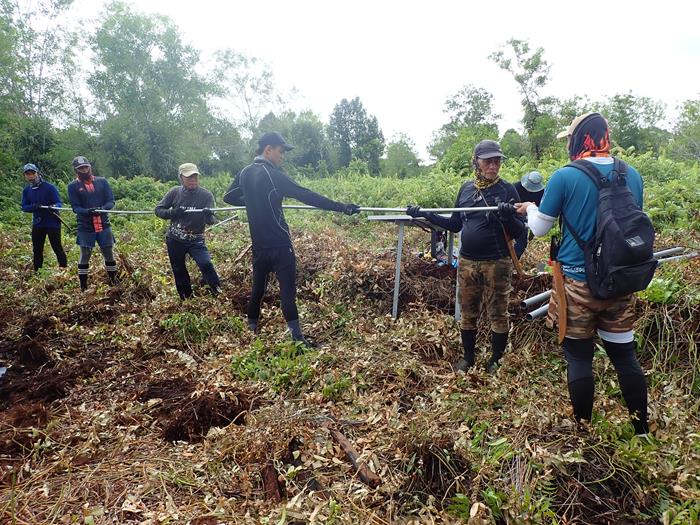 Members of the EOS Centre for Geohazard Observations and local collaborators preparing to install the GNSS station, a device that measures how fast the peatland is sinking (Source: Rino Salman/Earth Observatory of Singapore)
Members of the EOS Centre for Geohazard Observations and local collaborators preparing to install the GNSS station, a device that measures how fast the peatland is sinking (Source: Rino Salman/Earth Observatory of Singapore)
Behind every success is a great team
The team’s efforts yielded remarkable success. With the approval and support of Brunei's Forestry Department and officials, they managed to complete all the installations within a few days.
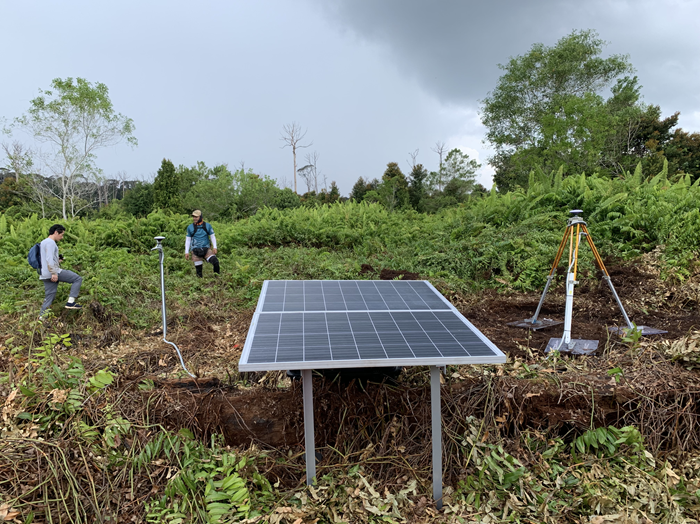 The completed GNSS station (Source: Cheryl Tay/Earth Observatory of Singapore)
The completed GNSS station (Source: Cheryl Tay/Earth Observatory of Singapore)
While the EOS-RS team coordinated the trip, the CGO team also played a crucial role in this installation. "They were the heroes of the day. They were in charge of installing the whole station. It would not have been possible without them,” said Dr. Ulloa.
EOS’ external collaborators Dr Alex Cobb from the Singapore-MIT Alliance for Research and Technology (SMART) and Associate Professor Rahayu Sukri at Universiti Brunei Darussalam were also essential to the success of the trip, especially in facilitating communication with the Brunei authorities. The field team from UBD even took on the most physically demanding aspects of the field work: opening up paths and making ways through the forest, preparing the installation site by clearing ferns to expose bare ground, carrying heavy equipment throughout the trek, all ensuring the safety of all its participants.
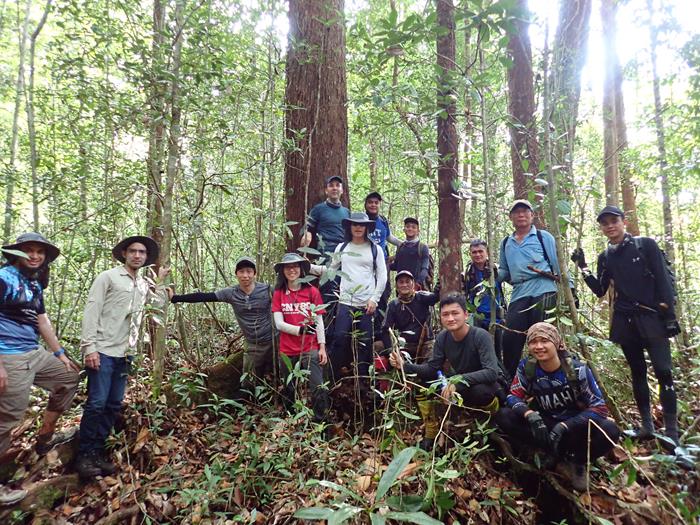
Members of EOS-RS and CGO, together with collaborators from SMART, UBD and the National University of Singapore pose inside the peatland forest (Source: Afnan Alizan/Universiti Brunei Darussalam)
Looking ahead, the EOS-RS and CGO teams are eagerly monitoring the data from the GNSS station. They anticipate that their innovative methods will generate valuable insights into studying peat swamps and peat forests, enabling EOS-RS to advance carbon monitoring techniques. Ultimately, these advancements could help safeguard the carbon stored within peatlands, contributing to our race to net zero.